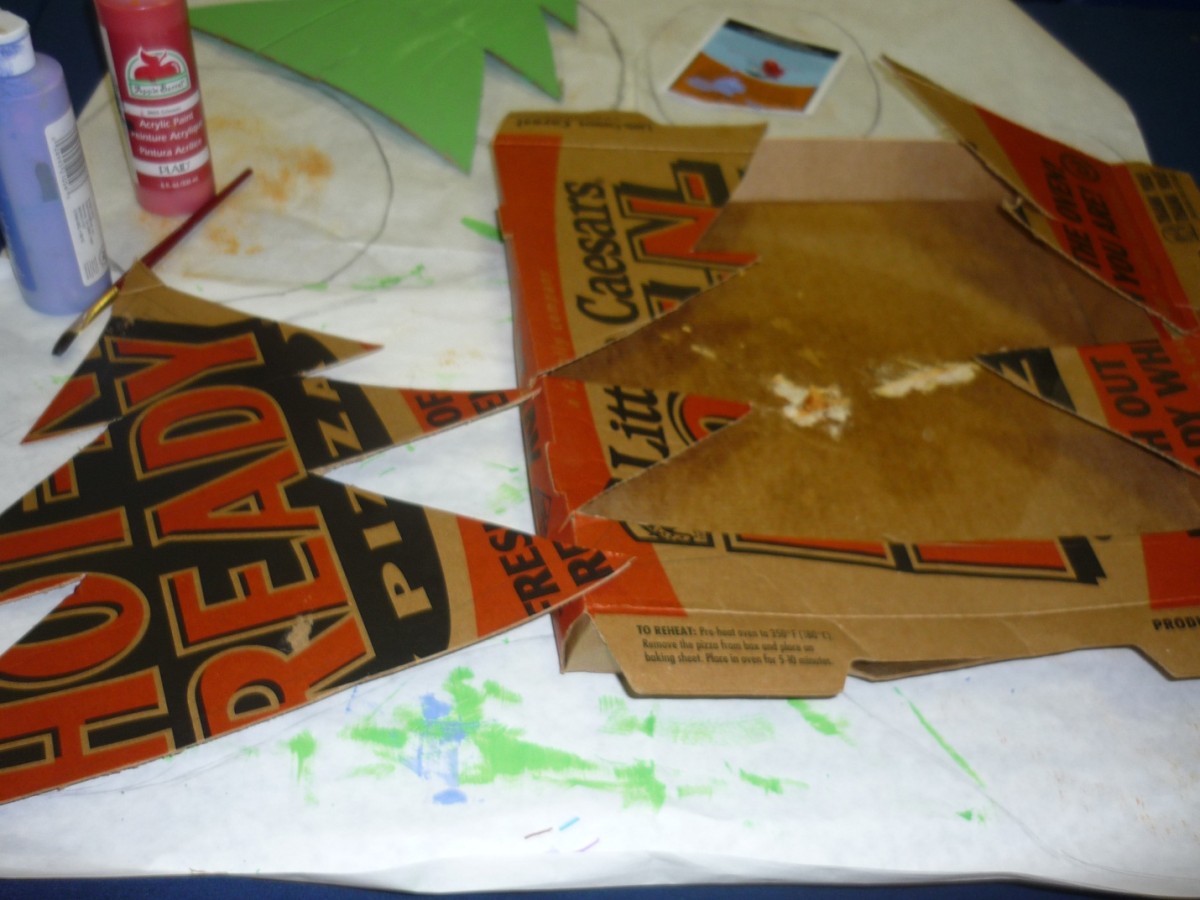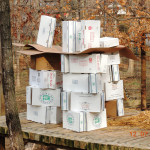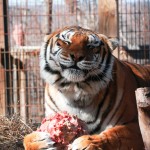At Crown Ridge Tiger Sanctuary we not only take care of our animal’s physical needs but we must also meet their mental needs. Just like people become bored of doing the same things over and over, our animals may become bored if they had the same routine everyday. When an animal is not stimulated enough they often exhibit stereotypic behaviors. A stereotypic movement can be categorized as either one that has no obvious function and is a movement repeated regularly or as a repeated movement that is an exaggerated form of a purposeful behavior. To prevent stereotypic behaviors we must provide daily enrichment. Environmental enrichment is the process of providing stimulating environments for captive animals in order for them to demonstrate their species-typical behavior, to allow them exercise control or choice over their environment, and to enhance their well-being. Enrichment includes the design of stimulating and naturalistic enclosures, the housing of appropriate social groups in captivity, and the introduction of objects, sounds, smells or other stimuli in the animal’s environment. Sometimes the enrichment available depends on the time of year. At CRTS, we provide our cats with many types of enrichment including: different scents such as perfumes and spices, transferring animals to different enclosures, adding different greenery/trees/plants to their yards, providing new toys such as balls or barrels, keeping pools in all yards, hiding meat and much more. To learn more about the positive effects of enrichment please read this article or read about lab rat enrichment.
E.N.R.I.C.H. – Encouraging Natural Responses in Captive Habitats
Creating Enrichment
When creating enrichment you must think about what senses or behaviors you are trying to stimulate in the cat. For example, spices and perfumes would stimulate the cat’s sense of smell and possibly lead the cat to mark over the scent. Next you must think about the materials that are needed to create the item. It is important to make sure the materials used are safe for the cats no matter what the cats do with it (eat it, play with it, lick it etc.). We cannot use tape, glue, string, nails or anything unnatural in the making of the enrichment item. Sometimes it can be tricky to think of alternative ways to hold things together. Instead of using tape sometimes peanut butter may hold things together or maybe even using sticks, it all depends on your project. After you have built your enrichment item you must double check everything so that it cannot hurt the cat in any way. Paws may get stuck or maybe there’s a sharp edge. ?(Check out this article for the many ways enrichment may go wrong.) Once you are sure your item is safe you must then place the item strategically in the yard so the cat will see it and become interested and investigate. The best part is watching the cat respond to the item you made. Their reactions all depend on what kind enrichment you are providing. If the item smells good the cat may rub against it or have a flehmen response. If it has tasty treats in it, surely the cat will gobble them up!
Here is an example of a simple enrichment project:
1. Cut out Christmas tree shape from a pizza box (card board is safe for the cats to play with)

2. Attached the two cardboard cut outs together by cutting slots into each piece and sliding them together.
3. Painted cardboard with nontoxic paint. Made presents out of paper and used peanut butter as “tape”. Added meatballs and perfume to attract the cats and done!
The cats gobbled up the meat balls and ripped open their presents saving the tree for last. It may take you several days to make an enrichment item but it only takes one second for a tiger to destroy it!











